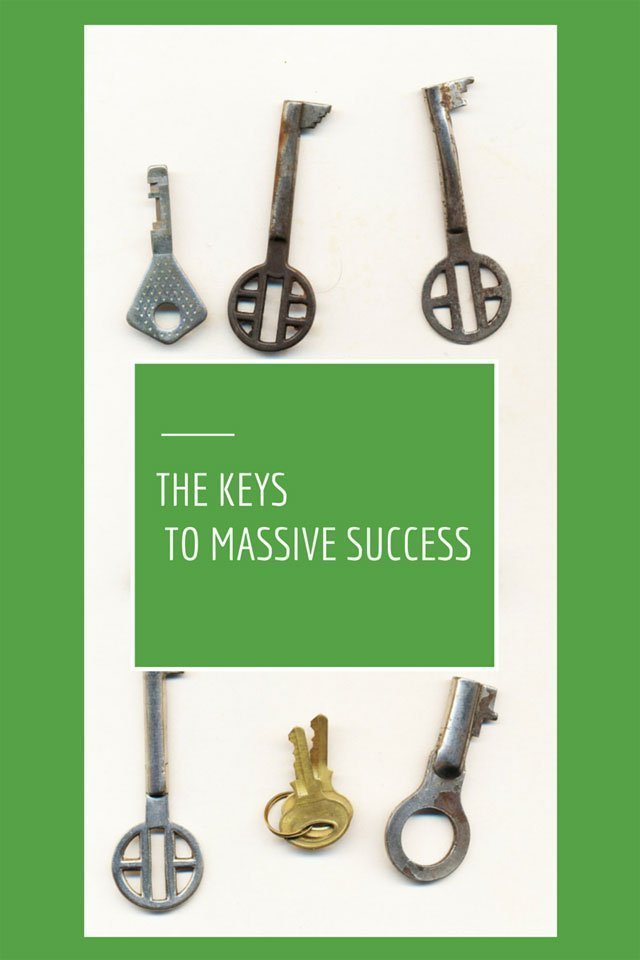I used to think success hinged on raw willpower — white-knuckling my way through distractions, staying “disciplined” no matter what life threw at me. That belief was shaped by years of motivational books that celebrated grit and grind above all else.
But life — in all its unpredictability — taught me something different. The real secret isn’t willpower. It’s what you fall back on when willpower runs out.
That’s where habits come in. Or more specifically, defaults — the unconscious choices we make when we’re tired, stressed, overwhelmed, or just not at our best. You don’t rise to your goals in those moments. You fall to your systems. Your habits.
So the question isn’t just “How do I build a new habit?” It’s “How do I make this my default?” That’s the difference between habits that fade and habits that stick.
Why Willpower Fails and Habits Win
We love the idea of willpower — powering through cravings, distractions, and exhaustion with pure mental strength. But the truth? Willpower is like a battery. It runs out. And when it does, you default to whatever’s easiest, most familiar, or most comforting.
That’s why your habits matter so much. When life gets messy — a bad night’s sleep, an overwhelming day, a conflict you didn’t see coming — you don’t always have the energy to choose the best path. You simply revert to whatever your nervous system knows best.
For some, that’s mindless scrolling or emotional eating. For others, it’s lacing up their shoes and going for a quick walk. The difference? Not willpower. Practice.
Think of your defaults like ruts on a dirt road. The more often you follow a path, the deeper it gets — until eventually, your brain chooses it without thinking. The key is to start carving out better ruts.
What Are Positive Defaults — And Why They Matter
Positive defaults are the automatic choices you reach for without needing motivation or mental gymnastics. They’re your baseline — the habits that kick in when everything else falls apart.
You know those days when you’re running on fumes, emotionally drained, and totally overwhelmed? That’s when your defaults show themselves. The question is: are they helping or hurting?
For a long time, my default in those moments was food — anything high-carb, sweet, and comforting. It didn’t matter what I wanted to do. That was what I did. But over time, I started nudging my defaults in a better direction. I built the habit of moving my body for at least 10 minutes every day — no matter what. That consistency turned a conscious decision into an automatic fallback.
Think of defaults like muscle memory for your behavior. When things are calm, you can choose. When they’re chaotic, you revert. The better your defaults, the more resilient you become.
How to Build Better Defaults That Stick
Sticky habits aren’t built through sheer intensity — they’re built through consistency. And the secret to consistency? Make it easy to win.
Start embarrassingly small. Want to build a writing habit? Set a timer for five minutes. Trying to work out daily? Just roll out the mat. That’s it. You’re not trying to hit a home run. You’re trying to show up so often that it becomes automatic.
Next, stack your habits. Anchor them to something you already do without thinking — like brushing your teeth or making coffee. If every morning starts with coffee, why not use that cue to stretch for 30 seconds or drink a glass of water?
Then tweak your environment. Make your defaults easy to access and hard to ignore. I keep my workout clothes visible. My journal is always open on my desk. I’ve even set up my phone so that when I open it, a focus playlist starts instead of TikTok.
You don’t need to “try harder.” You need to make it harder to fail.
Real-Life Habit Upgrades That Made a Difference
Some of the biggest shifts in my life didn’t come from grand goals — they came from upgrading my defaults one small moment at a time.
When I used to feel anxious or overstimulated at night, my default was staying up too late watching random videos. Now, more often than not, I reach for a book or journal, light a candle, and wind down properly. It wasn’t a massive overhaul. Just one swapped habit.
Another example: I used to skip workouts entirely if I didn’t have the time or energy for a full session. Now, my rule is 10 minutes. Even if I just stretch or walk around the block, that minimum movement keeps the streak alive — and more often than not, 10 minutes turns into more.
Instead of scrolling through social media when I hit a mental block, I’ve trained myself to open a writing doc and set a timer for 20 minutes. It’s not always inspired, but it keeps me in motion — and that’s the real win.
These aren’t “life hacks.” They’re quiet recalibrations of what I do when I’m not at my best. And over time, they’ve become the habits that hold me together when life tries to pull me apart.
When Life Gets Hard, Rely on What You’ve Practiced
Stress doesn’t ask for permission — it shows up uninvited. And when it does, most of us default to the path of least resistance. The irony? That’s when we need our good habits the most.
I heard Tony Horton say in a podcast once that people often stop exercising right when life gets hardest — even though that’s when movement could help them the most. That hit me. It’s true across the board: we ditch what works when we most need it to work.
That’s why I stick to my 100-day physical activity streak — not for fitness goals, but because it’s the scaffolding that holds me up when everything else feels like it’s falling apart. It’s not about pushing harder. It’s about protecting the foundation.
Think of it like this: when the storm hits, you don’t build the roof — you rely on the one you’ve already built. The same goes for your habits. You don’t need to be perfect. You just need to have something in place when life gets chaotic.
Awareness Is the First Habit
You can’t change a habit you don’t notice. Awareness is the first shift — the quiet moment when you catch yourself reaching for the snack, skipping the workout, or doomscrolling instead of decompressing.
That’s not failure. That’s data.
Every time you recognize a default that isn’t serving you, you get the chance to shape it. And shaping it doesn’t mean overhauling your life — it means making one small, intentional upgrade. One swap. One better fallback.
Ask yourself: Where are my defaults taking me? If they’re not aligned with the life you want, start tuning them. Not with pressure — but with practice.
You don’t need to be perfect. You just need to choose better, a little more often. That’s how you build habits that stick — not because you’re trying harder, but because your standards have changed.
And once that happens? You’ll realize the real power isn’t in what you do when everything’s perfect — it’s in what you return to when it’s not.
❓ FAQ: Building Habits That Stick
How many habits should you build at once?
Start with one. That’s it. It’s tempting to overhaul everything at once — new workout routine, new diet, new morning ritual — but that usually backfires. When your brain is juggling too many changes, it burns out fast.
Pick one high-impact habit you can realistically commit to, and anchor it to your day. Once it becomes automatic, then layer in the next. Think of it like weightlifting: you don’t increase all your lifts at once — you build strength gradually.
🔁 Momentum builds when consistency is easy. Make the first habit stick, then stack from there.
Why is it so hard to stick to good habits?
Because change feels good in theory — but in practice, it costs energy. Your brain is wired for efficiency, and anything new requires effort, decisions, and discomfort. That’s why we fall back to defaults when we’re tired, overwhelmed, or stressed.
Also, most people make habits too ambitious or vague: “I’ll work out every day!” vs. “I’ll move for 10 minutes.” The second is easier to repeat — and repetition is what turns effort into instinct.
🎯 The solution? Shrink the habit. Make it frictionless. Make it so small you can’t say no.
How do you make habits stick if you have ADHD?
If you have ADHD, you’re not lazy — your brain just processes motivation and reward differently. The usual advice like “just be consistent” often doesn’t land, because executive function challenges can make even simple routines feel overwhelming.
Here’s what helps:
Make the habit obvious and visual. Out of sight = out of mind. Use sticky notes, alarms, habit apps — whatever keeps it in your face.
Keep it ridiculously short. Think “1 push-up,” “1 sentence,” “1 minute of breathwork.” Momentum matters more than volume.
Add novelty or gamify it. ADHD brains love dopamine. Use a checklist, tracker, reward, or turn it into a challenge (e.g., streaks).
Use body doubling. Doing the task alongside someone else — even virtually — can help initiate action.
Be kind, not rigid. Flexibility helps prevent the all-or-nothing spiral. Missing a day doesn’t mean you failed — it means you’re human.
🔁 With ADHD, the trick isn’t doing it perfectly — it’s making the habit easier to start and more rewarding to finish.
What if I revert back to an old default?
You will. That’s not pessimism — it’s reality. Old defaults don’t disappear overnight. They were wired into your brain over months or years, and under stress, your system might still reach for them. That doesn’t mean you failed. It means you’re human.
The key is to notice it without spiraling. Awareness is a win. When you catch yourself slipping into an old habit, don’t waste energy on guilt — use it as intel. Ask:
What made this fallback so easy? What could I tweak next time?
Then return to your new habit. Even one small action — like getting up, drinking water, or opening your journal — can help reset the path.
You’re not starting from scratch. Every time you choose the new default, even after slipping, you’re reinforcing it. That’s what builds habits that stick — not perfection, but repetition after interruption.
🔁 Progress isn’t linear. It’s looped. What matters is what you return to.



